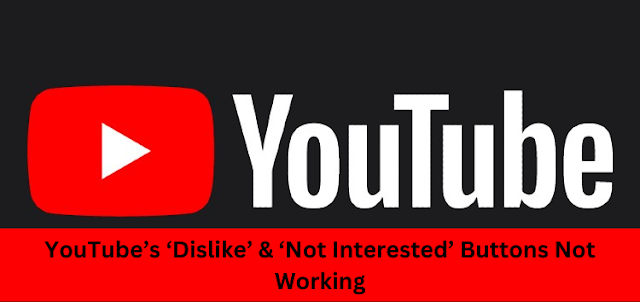YouTube’s ‘Dislike’ & ‘Not Interested’ Buttons Not Working
YouTube’s ‘Dislike’ & ‘Not Interested’ Buttons Not Working
YouTube is one the leading streaming platforms. The platform is the main source on videos, music and even podcasts for millions around the world. While, YouTube’s algorithm adjusts to the video you watch, it seems according to the latest research that despite hitting the ‘Dislike’ button users keep seeing videos they are not interested in.
Trouble with ‘Dislike’ & ‘Not Interested’ Buttons
Even when viewers tell YouTube that they aren't interested in particular sorts of content, identical suggestions continue to appear, according to a recent Mozilla research. Using data from over 20,000 YouTube viewers' video recommendations, Mozilla researchers discovered that buttons such as "not interested," "dislike," "stop suggesting channel," and "delete from watch history" are mainly useless at stopping similar material from being suggested.
Even at their finest, these buttons let through more than half of the suggestions that are comparable to what a user said they were not interested in, according to the analysis. At their worst, the buttons hardly made a difference in preventing comparable movies from being seen.
According to YouTube spokeswoman Elena Hernandez, these tendencies are purposeful since the site does not attempt to ban all material linked to a certain subject. Hence, if you dislike a video related to Android file transfers you may see some videos. However, Hernandez questioned the research, claiming that it fails to take into account how YouTube's controls are constructed.
Hernandez claims that Mozilla's definition of "similar" ignores YouTube's recommendation system. The "don't suggest channel" button disables the channel from being recommended in the future. According to the corporation, it does not intend to halt all suggestions of material relating to a certain subject, perspective, or speaker.
Other sites, such as TikTok and Instagram, have included an increasing number of feedback mechanisms for users to train the algorithm, ostensibly to offer them appropriate material. However, people often complain that even after indicating that they do not want to view something, identical suggestions continue to appear.
According to a Mozilla researcher, it is not always apparent what various options perform, and platforms are not upfront about how input is taken into consideration. The lack of transparency is affecting overall user experience hence platforms such as YouTube should pay a closer attention to user behavior.



Comments
Post a Comment